
Mechanics of Solids
Scope & Guideline
Bridging Theory and Application in Solid Mechanics
Introduction
Aims and Scopes
- Solid Mechanics and Material Behavior:
Research in this area encompasses the study of mechanical properties and behavior of various materials, including metals, composites, and polymers under different loading conditions. - Dynamic and Static Analysis of Structures:
This includes the analysis of structural response to static and dynamic loads, exploring phenomena such as vibrations, buckling, and stability of structures. - Thermoelasticity and Heat Transfer:
Investigations into the interactions between thermal and mechanical behavior of materials, particularly under transient conditions and varying temperatures. - Wave Propagation and Acoustics:
Research focusing on the propagation of waves in solid media, including elastic, acoustic, and electromagnetic waves, and their interactions with materials. - Numerical Methods and Computational Mechanics:
Development and application of numerical techniques for solving complex mechanics problems, including finite element methods, boundary element methods, and meshless approaches. - Contact Mechanics and Friction:
Study of the mechanics of contact between solid bodies, including friction, wear, and the influence of surface roughness on mechanical interactions. - Nonlocal and Fractional Models:
Exploration of nonlocal continuum theories and fractional calculus applications in solid mechanics, providing insights into size-dependent and memory-dependent behaviors.
Trending and Emerging
- Multiscale Modeling and Simulation:
There is a growing emphasis on multiscale approaches that integrate various scales of material behavior, from atomic to macroscopic levels, enabling more accurate predictions of material performance. - Advanced Composite Materials:
Research on the behavior and performance of advanced composite materials, especially in relation to their mechanical properties and failure mechanisms, is increasingly prominent. - Smart Materials and Structures:
The exploration of smart materials that respond to environmental stimuli and their integration into structural systems is gaining traction, reflecting advancements in material science. - Energy Absorption and Impact Resistance:
Investigations into materials and structures designed for energy absorption and impact resistance, particularly for applications in defense and safety, are becoming more prevalent. - Nonlinear Dynamics and Chaos:
The study of nonlinear dynamics and chaotic behavior in mechanical systems is emerging as a significant area of interest, especially in relation to complex engineering systems. - Sustainability and Green Materials:
An increasing number of studies focus on sustainable materials and processes, emphasizing the need for environmentally friendly approaches in solid mechanics research.
Declining or Waning
- Traditional Elasticity Theory:
There is a noticeable decrease in papers purely focused on classical elasticity theory, as researchers increasingly explore more complex and nuanced models that account for material nonlinearity and size effects. - Static Analysis of Simple Structures:
Research that primarily deals with the static analysis of basic structures (e.g., simple beams and frames) is less prevalent, with a shift towards dynamic and more complex structural analyses. - Homogeneous Material Models:
The focus on homogeneous material models is waning as the field shifts towards more realistic representations of materials that consider inhomogeneities, anisotropy, and multi-scale effects. - Linear Fracture Mechanics:
While still important, linear fracture mechanics is being overshadowed by more advanced approaches that incorporate nonlinear effects, damage mechanics, and more sophisticated failure criteria. - Basic Theoretical Mechanics:
Research that remains strictly theoretical without practical applications or computational advancements is seeing a decline, as the field increasingly favors applied research with real-world implications.
Similar Journals
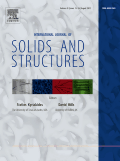
INTERNATIONAL JOURNAL OF SOLIDS AND STRUCTURES
Shaping the Landscape of Mechanical EngineeringINTERNATIONAL JOURNAL OF SOLIDS AND STRUCTURES, published by PERGAMON-ELSEVIER SCIENCE LTD, is a leading academic journal with a strong reputation in the fields of engineering and applied mathematics. Established in 1965 and converging its impact on research through 2024, this journal is highly regarded within Q1 quartile rankings across multiple disciplines, including Applied Mathematics, Condensed Matter Physics, and Mechanical Engineering. With its ISSN 0020-7683 and E-ISSN 1879-2146, the journal is systematically indexed and accessible to a global audience, although it does not currently offer open access options. Researchers, professionals, and students alike benefit from its high-impact research articles, as evidenced by its impressive Scopus rankings in various categories, including a 91st percentile in Applied Mathematics and 81st in Mechanical Engineering. The journal serves as a critical platform for the dissemination of groundbreaking findings in solid and structural mechanics, promoting innovation and collaboration within the scientific community.

APPLIED MATHEMATICAL MODELLING
Advancing Real-World Solutions Through Mathematical InnovationApplied Mathematical Modelling is a premier journal published by Elsevier Science Inc, dedicated to advancing the field of applied mathematics through the dissemination of high-quality research. With an impressive Impact Factor that places it in the Q1 category for both Applied Mathematics and Modeling and Simulation, this journal has established itself as a critical resource for researchers and practitioners alike, boasting a Scopus rank of #17 out of 635 in Applied Mathematics and #15 out of 324 in Modeling and Simulation. Since its inception in 1976, it has provided a vital platform for innovative models and techniques that drive progress across various scientific disciplines. Researchers will find an extensive range of articles addressing contemporary issues and developments, making it an essential read for anyone interested in the application of mathematical frameworks to real-world problems. While the journal maintains a subscription-only access model, its impactful contributions ensure that it remains an influential voice in the landscape of applied mathematics.
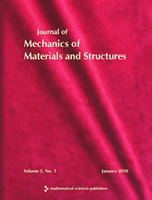
Journal of Mechanics of Materials and Structures
Bridging Theory and Application in Material Sciences.Journal of Mechanics of Materials and Structures, published by Mathematical Science Publishers, is a distinguished periodical in the field of Applied Mathematics and Mechanics of Materials. With the ISSN 1559-3959, this journal has been a pivotal platform since its inception in 2006, providing insights and advancements in the mechanics of materials and their structural applications. Operating out of the University of California, Berkeley, this journal not only boasts a respectable standing within its categories, ranking Q4 in Applied Mathematics and Q3 in Mechanics of Materials as of 2023, but it also serves a crucial role in fostering academic discourse among researchers, practitioners, and students alike. Although it does not currently offer open access, its contributions to the respective fields are invaluable, underscoring the relevance and importance of continued research in understanding material behavior and structural integrity. Whether investigating theoretical frameworks or engineering applications, the Journal of Mechanics of Materials and Structures remains an essential resource for anyone dedicated to the advancement of the science of materials and structures.
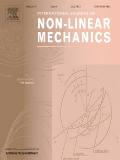
INTERNATIONAL JOURNAL OF NON-LINEAR MECHANICS
Fostering Excellence in Mechanical Engineering ResearchWelcome to the International Journal of Non-Linear Mechanics, a premier publication dedicated to advancing the understanding of non-linear behavior in mechanical systems. Published by Pergamon-Elsevier Science Ltd, this esteemed journal has been an influential platform since its inception in 1966 and continues its rigorous exploration of specialized topics until 2024. With a strong focus on applied mathematics, mechanical engineering, and mechanics of materials, it holds an impressive Q1 ranking in both mechanical engineering and mechanics of materials, and a Q2 ranking in applied mathematics, underscoring its significance in these fields. Notably, it ranks 81st out of 635 in Applied Mathematics, highlighting its vital contribution to the literature. The journal's commitment to quality research is reflected in its indexing in Scopus and its prominent impact within the academic community. Although not an open access journal, it remains accessible to researchers and professionals seeking cutting-edge innovations and breakthroughs in non-linear mechanics. We invite scholars, practitioners, and students alike to engage with the pivotal research published in this journal as they advance their own works in the dynamic landscape of engineering and applied sciences.

Journal of Applied Mechanics and Technical Physics
Shaping the Future of Engineering through Rigorous ResearchJournal of Applied Mechanics and Technical Physics is a distinguished publication that serves as a vital resource for researchers and professionals in the realms of mechanical engineering, mechanics of materials, and condensed matter physics. Published by MAIK NAUKA/INTERPERIODICA/SPRINGER, this journal has been committed to disseminating high-quality research since its inception in 1965. With a noted presence in the academic community, it holds a respectable Q3 ranking in multiple categories as of 2023, indicating its relevance and contribution to the field. Although it does not currently offer open access, the journal provides valuable insights and advancements through its rigorous peer-review process. Covering a broad spectrum of topics in applied mechanics and technical physics, it aims to foster innovation and dialogue among scientists, engineers, and scholars alike. Located in the United States, the journal continues to make significant strides in bridging the gap between theoretical research and practical applications, making it an essential read for anyone engaged in these dynamic fields.

Journal of the Serbian Society for Computational Mechanics
Bridging Theory and Application in MechanicsJournal of the Serbian Society for Computational Mechanics, published by the Serbian Society for Computational Mechanics, is a vital platform for advancing research and knowledge in the field of computational mechanics. Established in 2012, this journal serves the academic community by providing a forum for innovative studies, methodologies, and applications within computational mechanics, presenting valuable insights for researchers, professionals, and students alike. With an ISSN of 1820-6530 and a ranking of Q4 in Computational Mechanics, it carries an essential influence in the engineering realm, despite its current rank of 71 out of 89. The journal's commitment to scholarly excellence aims to foster collaboration and encourage interdisciplinary research, making it an important resource for those invested in the evolving landscape of computational methodologies. Although the journal currently does not offer Open Access options, it remains dedicated to disseminating knowledge that will resonate within the local and global scientific community.
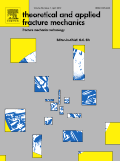
THEORETICAL AND APPLIED FRACTURE MECHANICS
Driving excellence in theoretical and applied research.THEORETICAL AND APPLIED FRACTURE MECHANICS, published by Elsevier, is a leading journal dedicated to advancing the field of fracture mechanics through rigorous theoretical and experimental research. With an impressive impact, the journal holds a Q1 categorization across multiple disciplines, including Applied Mathematics, Condensed Matter Physics, Materials Science (miscellaneous), and Mechanical Engineering, highlighting its importance in bridging various domains of science and engineering. The journal's ranking within the Scopus database, including 96th percentile in Applied Mathematics and 88th percentile in Mechanical Engineering, underscores its vital contribution to scholarly dialogue and knowledge dissemination. Although it currently does not offer open access, THEORETICAL AND APPLIED FRACTURE MECHANICS maintains a commitment to high-quality publication, aiming to foster interdisciplinary collaboration and innovation in the study of fracture mechanics from 1984 to 2024 and beyond. Researchers, professionals, and students engaged in examining the mechanics of materials will find valuable insights and cutting-edge studies within its pages.

Computational Particle Mechanics
Pioneering Research in Fluid Dynamics and Structural EngineeringComputational Particle Mechanics, published by SPRINGER INTERNATIONAL PUBLISHING AG, is a leading journal dedicated to advancing knowledge in the interdisciplinary fields of computational mechanics, civil engineering, and fluid dynamics. With an impressive impact factor reflecting its high-quality research publications, this journal maintains a strong presence in the academic community with a Q1 ranking in categories such as Civil and Structural Engineering, Computational Mechanics, and Numerical Analysis as per the latest 2023 evaluations. Researchers and professionals benefit from the journal's commitment to open-access options, promoting wider dissemination of groundbreaking studies. Operating under the Swiss publishing house since 2014, Computational Particle Mechanics aims to foster innovation through the exploration of particle-based methods and simulations, making significant contributions to methodologies within computational mathematics and modeling. As the journal continues to evolve until its converged years end in 2024, it stands as a vital resource for those looking to enhance their expertise in dynamic modeling and simulation techniques.
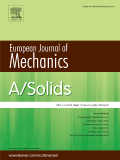
EUROPEAN JOURNAL OF MECHANICS A-SOLIDS
Exploring Innovations in Material ScienceThe EUROPEAN JOURNAL OF MECHANICS A-SOLIDS, published by ELSEVIER and based in the Netherlands, stands as a premier outlet for research in the field of solid mechanics. With an impressive track record since its inception, the journal has been indexed in prestigious categories including Materials Science, Mechanical Engineering, and Mathematical Physics, achieving Q1 quartile status across these domains in 2023. This recognition underscores the journal's impact, with Scopus rankings placing it in the top echelon of its respective fields, such as #39 in General Physics and Astronomy and #116 in Mechanical Engineering, demonstrating its significance and wide-reaching influence in the academic community. Scientists, engineers, and researchers are encouraged to submit their cutting-edge findings in areas related to solid mechanics, contributing to the journal's mission of advancing knowledge and innovation in this vital discipline. The journal's comprehensive scope allows for interdisciplinary engagement, making it an essential resource for professionals and students alike seeking to explore the latest developments in mechanics of materials and related areas.

Moscow University Mechanics Bulletin
Empowering Ideas in Mathematics and MechanicsMoscow University Mechanics Bulletin, published by PLEIADES PUBLISHING INC, is a dedicated journal that has been influencing the fields of mechanical engineering and mechanics since its inception. With an ISSN of 0027-1330 and E-ISSN of 1934-8452, this journal serves as a crucial platform for advancing knowledge in mathematics, mechanical engineering, and mechanics of materials. Though currently indexed in the Q4 category across these disciplines, it offers a unique space for researchers and professionals to engage with emerging theories, experimental results, and practical applications. With a converged publication history spanning from 1973 to 1987, and continuing from 2007 to 2024, the journal remains relevant in today’s academic landscape. Though it operates under traditional access models, the journal's global reach aims to connect diverse voices in engineering research. Aspiring researchers and seasoned professionals alike will find valuable insights and a robust discourse that contribute to their respective fields.